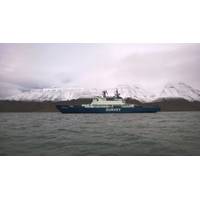
Arctia to Map Offshore Wind Area in Norway
as ice has cleared, and the ship will return to Finland near the end of the summer.The Norwegian government has an ambition to develop offshore wind to increase access to renewable energy.The contract marks Arctia's third time participating in the Mareano program, which maps depth and topography, sediment composition, biotopes and habitats in Norwegian waters
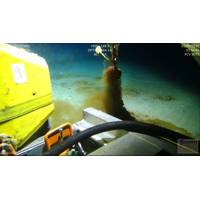
Ocean Floor a Reservoir for Plastic Pollution
where it travels is crucial to protecting marine ecosystems and wildlife.Dr Denise Hardesty, Senior Research Scientist with CSIRO, said this is the first estimate of how much plastic waste ends up on the ocean floor, where it accumulates before being broken down into smaller pieces and mixed into ocean sediment.“We know that millions of tonnes of plastic waste enter our oceans every year but what we didn’t know is how much of this pollution ends up on our ocean floor,” Hardesty said.“We discovered that the ocean floor has become a resting place, or reservoir, for most plastic pollution
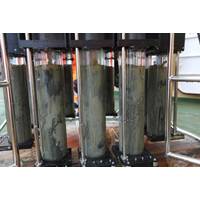
Improved Sample Preservation via OSIL Multiple Corers
Multiple Corers from Ocean Scientific International Ltd (OSIL) are able to overcome the traditional difficulties associated with benthic sampling and collect undisturbed sediment samples. The multiple corers are landed on the seabed at slow speed which, in combination with the minimal footprint of the corer, prevents a bow wave from forming and driving away the delicate flocculant material that forms on the surface layer of the seabed.Image courtesy OSILThe penetration speed is controlled by a hydrostatically damped piston & central weight system which enables up to 12 core tubes to be slowly
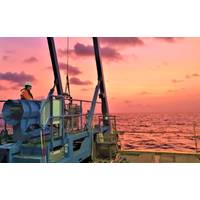
Feritech Global Designs Next-Gen Auto-Drop Piston Corer for Oceaneering
Feritech Global has designed a next generation auto-drop piston corer for Oceaneering, which is expected to reduce the time and costs related to subsea geotechnical surveying.A piston corer is a long, heavy tube plunged into the seafloor to extract samples of soft sediment. Analysis of these samples provides vital information for developers who want to build installations out at sea, such as wind turbines, oil and gas pipelines, or undersea cables.The new bespoke system has been developed for Oceaneering with their project team involved in its development, providing feedback at each stage.It

Kongsberg Discovery Unveils Sub-Bottom Profiling Tool for Proprietary Echo Sounders
profiling capability for Kongsberg's deep-water multi beam echo sounder (MBES) systems EM 124 and EM 304, without the need for additional hardware.A sub-bottom profiling system complements MBES surveys tailored to map the seabed and sub-seafloor.Gathering sub-bottom data is necessary to understand sediment thickness and distribution, as well as for detecting buried objects or infrastructure, such as boulders or pipelines.A sub-bottom signal must have specific properties and be customized for the sub-bottom purpose.Traditionally, this has required equipment that is often quite large, especially for

World's Largest Known Deep-sea Coral Reef Habitat Found
which in turn can offer insight into the resiliency of these populations. This is important for predicting the impacts of human activities on coral communities and for developing solid plans for their protection."For years we thought much of the Blake Plateau was sparsely inhabited, soft sediment, but after more than 10 years of systematic mapping and exploration, we have revealed one of the largest deep-sea coral reef habitats found to date anywhere in the world," said Kasey Cantwell, operations chief for NOAA Ocean Exploration. "Past studies have highlighted some coral in the

Frozen Methane Under the Seabed is Thawing – And It's Worse Than We Thought
deemed to be “safe”, buried hundreds of metres below the seabed in deeper waters tens of kilometres further from land.But frozen methane in the deep ocean may vulnerable after all. In oceans and seas where the water is deeper than around 450 metres to 700 metres are layer upon layer of sediment that contains the hydrate. And some of it is deeply buried and warmed geothermally by the Earth so, despite being hundreds of metres below the seafloor, it is right at the point of instability.Some layers of sediment are permeable and create a complex underground plumbing for the gas to move through

Fugro Nets Offshore Namibia Survey Contract
surveys ensured efficient and accurate data collection, enabling Galp to make informed decisions for safe energy operations in the region," Fugro said.With fieldwork completed earlier this month, the survey reached depths of 2000 meters. The Fugro Venturer, a geophysical vessel, collected sediment samples for environmental and chemical analysis before an autonomous underwater vehicle (AUV) captured seabed video footage. Additionally, Fugro acquired in situ full ocean depth water profiles and water samples to measure the current biodiversity. The Geo-data collected through this survey will
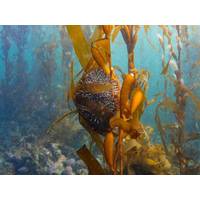
NZ’s Vital Kelp Forests are in Peril from Ocean Warming
the range and basic physiology of many seaweed species, removing sensitive ones from the northern edges of their ranges and slowing growth rates of most.Seaweeds require sunlight to photosynthesise and grow. But increasingly frequent erosion events from extreme weather like cyclone Gabrielle raise sediment levels in coastal seawater, leading to coastal darkening.Coastal darkening results in reduced cover of large brown algae, including kelp and native fucoids. Christopher Cornwall, CC BY-SASediment running off the land, made worse by storm events, has already lowered photosynthetic rates of seaweeds



 February 2024
February 2024





